With facilities open to the public May through mid-October, the Lake Champlain Maritime Museum (LCMM) is non-profit museum located in Vergennes, Vermont, USA. Its mission is to preserve and share the history and archaeology of Lake Champlain. As a maritime museum specializing in archaeology, LCMM studies the hundreds of shipwrecks discovered in Lake Champlain and plays a major role in the management of those cultural resources. Through the preservation and interpretation of those and other artifacts, the museum tells the story of the people and culture of the Lake Champlain region.
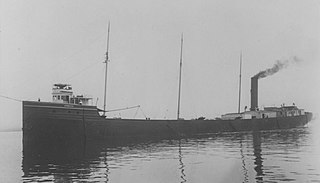
The SS Appomattox was a wooden-hulled, American Great Lakes freighter that ran aground on Lake Michigan, off Atwater Beach off the coast of Shorewood, Wisconsin in Milwaukee County, Wisconsin, United States in 1905. On January 20, 2005 the remnants of the Appomattox were listed on the National Register of Historic Places.
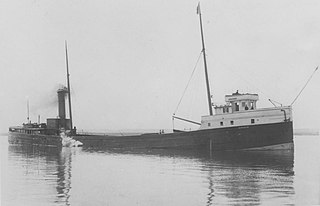
The SS Marquette was a wooden-hulled, American Great Lakes freighter built in 1881, that sank on Lake Superior, five miles east of Michigan Island, Ashland County, Wisconsin, Apostle Islands, United States on October 15, 1903. On the day of February 13, 2008 the remains of the Marquette were listed on the National Register of Historic Places.

Samuel P. Ely is a shipwreck in Two Harbors, Minnesota listed on the National Register of Historic Places. She was a schooner that sailed the Great Lakes carrying iron ore, coal, and other bulk freight. She was built in 1869 and was a fairly typical example of the 200-foot schooner built in the 1870s, though she was reinforced for the demands of carrying iron ore.

The steamboat Oakes Ames was built in 1868 by the Napoleon B Proctor Shipyard in Burlington, Vermont for the Rutland Railroad. The 244-foot paddle wheeler was designed to ferry railroad cars from Burlington across Lake Champlain to Plattsburgh, New York. She was named after one of the railroad's directors' Oakes Ames.
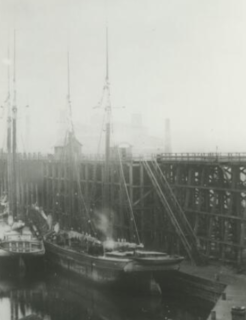
Dunkirk Schooner Site is a historic shipwreck archaeological site located in Lake Erie off Dunkirk in Chautauqua County, New York. It lies about 20 miles (32 km) off Dunkirk resting in 170 feet (52 m) of cold freshwater, embedded on submerged lands of New York in the eastern basin of Lake Erie.

The Henry Chisholm was a wooden freighter; it was sunk off the shore of Isle Royale in Lake Superior in 1898 and the remains are still on the lake bottom. The wreck was placed on the National Register of Historic Places in 1984.

Gallinipper was a schooner that sank in Lake Michigan off the coast of Centerville, Manitowoc County, Wisconsin, United States. In 2010, the shipwreck site was added to the National Register of Historic Places.

Home was a two-masted schooner which sank in Lake Michigan off Centerville in Manitowoc County, Wisconsin, United States, in 1858. In 2010 the shipwreck site was added to the National Register of Historic Places.

The Lumberman was a 3-masted schooner that sank in 1893 in Lake Michigan off the coast of Oak Creek, Wisconsin, United States. In 2009 the shipwreck site was added to the National Register of Historic Places.

The Byron was a schooner that sank in Lake Michigan off the coast of Oostburg, Wisconsin, United States. In 2009 the shipwreck site was added to the National Register of Historic Places.

The Burlington Bay Horse Ferry is a shipwreck in Lake Champlain off Burlington, Vermont, United States. It is the only known example of a turntable horse ferry, a ship type that was common on United States waterways in the mid-19th century. The wreck is a Vermont State Historic Site, and was listed on the National Register of Historic Places in 1993. Its location is marked by buoys in Burlington Bay between the northern end of the Burlington Breakwater and Lone Rock Point, and it is visitable by certified divers.

The Burlington Breakwater is a breakwater providing shelter to the harbor of Burlington, Vermont from the open waters of Lake Champlain. It was built in several stages between 1836 and 1890, and is a rare example of a 19th-century timber-cribbed stone breakwater. It was listed on the National Register of Historic Places in 2003.

The General Butler was a schooner-rigged sailing canal boat that plied the waters of Lake Champlain and the Champlain Canal in the United States states of Vermont and New York. Built in 1862 and named for American Civil War General Benjamin Franklin Butler, she sank after striking the Burlington Breakwater in 1876, while carrying a load of marble. Her virtually intact wreck, discovered in 1980, is a Vermont State Historic Site and a popular dive site; it was listed on the National Register of Historic Places in 1998.

The Phoenix was a sidewheel paddle steamer operating on Lake Champlain between the United States states of New York and Vermont and the British province of Lower Canada. Built in 1815, she grounded, burned and sank in 1819 off the shore of Colchester, Vermont. Her surviving wreckage is the oldest known example of a sidewheel steamer anywhere in the world. The wreck site is a Vermont State Historic Site, which may be visited by registered and qualified divers. It was listed on the National Register of Historic Places in 1998.

The Australasia was a wooden hulled American Great Lakes freighter that served on the Great Lakes of North America between her construction in 1884 to her burning and sinking in 1896. On October 18, 1896 while loaded with coal, the Australasia sank in Lake Michigan near the town of Sevastopol, Door County, Wisconsin, United States, after burning off Cana Island. On July 3, 2013 the wreck of the Australasia was added to the National Register of Historic Places.

Antelope was a Great Lakes steamship that later was converted into a schooner barge) and sank in Lake Superior near the Apostle Islands in 1897.
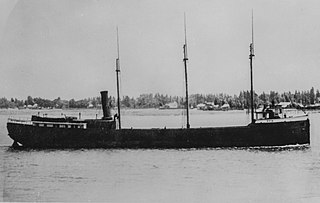
SS Ohio was a wooden hulled Great Lakes freighter that served on the Great Lakes of North America from her construction in 1875, to her sinking in September 1894 when she collided with the schooner barge Ironton which also sank in the collision. Ironton was being towed by the steamer Charles J. Kershaw, which was also towing the schooner Moonlight. Ohio was found upright in 2017, over 122 years after her sinking in over 200 feet of water off Presque Isle, Michigan. Ironton is still missing. The researchers who discovered Ohio plan to nominate her for a listing in the National Register of Historic Places.
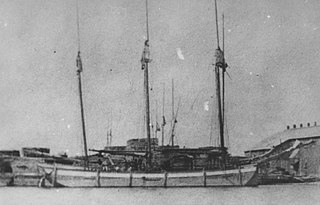
The Mayflower was a wooden hulled scow schooner that sank on June 2, 1891, in Lake Superior near Duluth, Minnesota, United States, after capsizing with a load of sandstone blocks. In 2012 the shipwreck site was added to the National Register of Historic Places.

SS Selah Chamberlain was a wooden hulled Great Lakes freighter that sank in Lake Michigan in 1886, 6 miles (10 km) off the coast of Sheboygan, Sheboygan County, Wisconsin, United States after being rammed by the steamer John Pridgeon Jr. with the loss of five lives. On January 7, 2019, the wreck of Selah Chamberlain was listed on the National Register of Historic Places, and was given the reference number 100003288. She was the first shipwreck listed on the National Register of Historic Places in 2019.
















